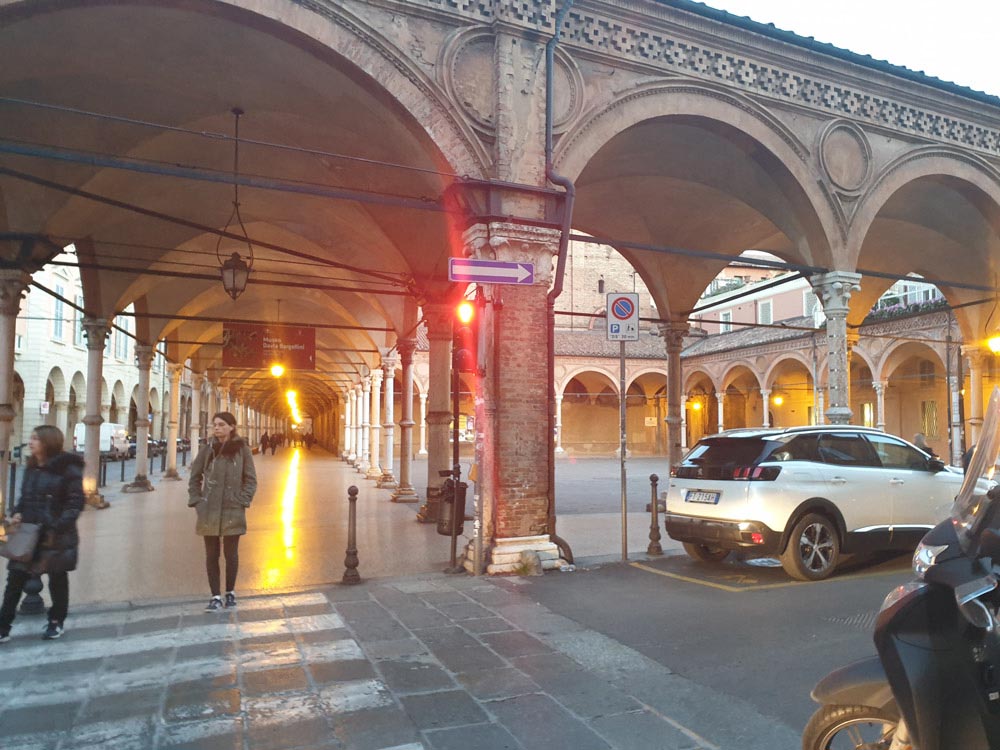Bologna, Italy, capital of the Emilia-Romagna region is totally worth the visit if you are a fan of discovering travel destinations. Check out why here.
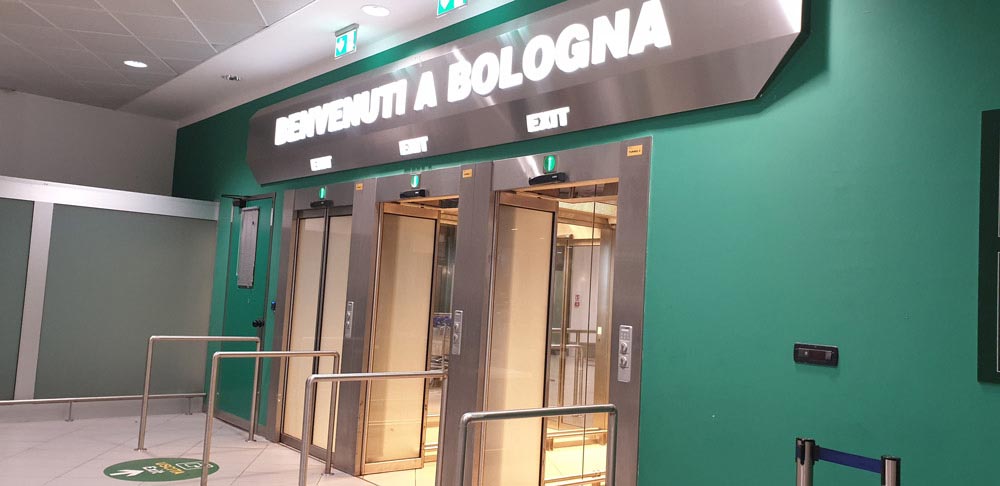
Located in the northern of Italy, famous for its churches, Piazza Maggiore and Two Towers or Due Torri, leaning Asinelli and Garisenda. It has about one million citizens with a well preserved historical Center. In the year 2000 it was declared the European Capital of Culture, in 2006 a UNESCO City of Music, and became part of the Creatives Cities Network. It is also a one of the largest permanent trade fairs in Europe, including my favorite Cosmoprof Bologna.
Bologna is also known for being an important centre of European intellectual life during the Middle Ages, it hosts the world’s oldest institution of higher learning founded in AD 1088, the University of Bologna.
The old city is surrounded by a wall “third wall” built at the beginning of the 13th century and demolished at the beginning of the 20th century. The city gates remain today and can be seen around the old city; Porta Castiglione, Porta Santo Stefano, Porta Maggiore, Porta San Vitale, Porta San Donato, Porta Mascarella, Porta Lame, Porta San Felice, Porta Sant’Isaia, Porta Saragozza, and Porta San Mamolo.
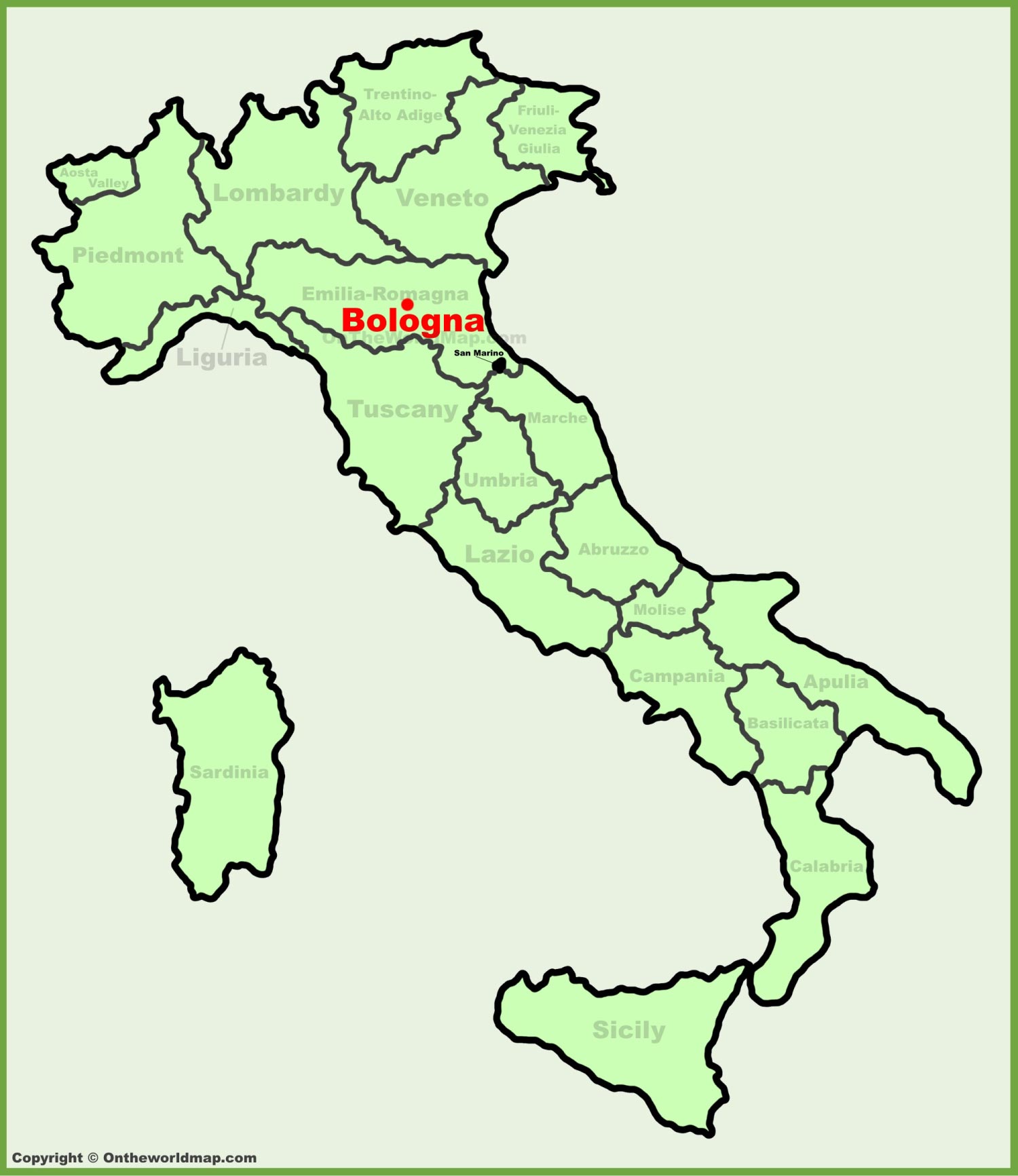
Fontana di Nettuno or Fountain of Neptune
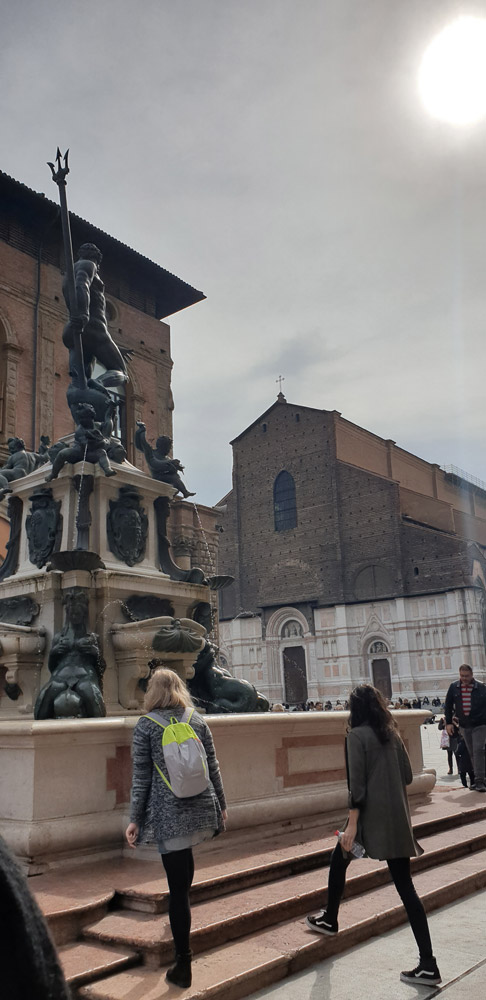
One of Bologna’s most famous landmark and a meeting point to many bolognese. After a lengthy restoration, the free from scaffolding statue was put back in early 2018. Since Bolognese didn’t have a public fountain, Pope Pius IV decided to gift them one and the Fountain of Neptune was erected between 1564 and 1566. Many buildings were put down in Piazza de Nettuno to make room for the Foutain. The fountain was also an indirect message to the Bologense to remind them that after being an independent Commune during the High Middle Ages, in 1508, Bologna became subject to the Papal States.
The monument is the result of a collaboration between architect Tommaso Laureti and Flemish sculptor Jean de Boulogne, known as Giambologna. You may know him from the Rape of the Sabine Women marble sculpture, located in the Loggia dei Lanzi in Florence’s Piazza della Signoria. Giambologna took his inspiration from ancient Greek-Roman statues. He designed Neptune with a strong body, but depicted an older face to symbolize the strength and wisdom of the pope. The statue was put there to showcase the power of Popes and glorify them, in order words this monument says “just as Neptune rules the seas, the Pope rules the world“. The statue of Neptune is about four meters high and weighs about 2,200 kilograms, it is known in the Bolognese dialect by “Al Zigant” or “Il Gigante”.
Stories People Say about the Fountain of Neptune taken from bolognauncovered
- Legend has it that Giambologna wanted to make Neptune’s genitals bigger, but, naturally, the Church forbade him from doing so. In retaliation, he designed the statue so that, from a certain angle, the outstretched thumb of his left hand seems to stick out from the lower abdomen, similar to an erect penis. (I know this is the first thing you’ll want to check out – go stand at the bottom end of the staircase leading to the Sala Borsa with your back to Via Indipendenza and take a look.)
- The Fountain of Neptune is a popular meeting point for the Bolognesi: ‘ci vediamo al Nettuno‘, you will hear them say.
- It is said that in order to pass an important exam, students at the University of Bologna must take two counterclockwise turns around the fountain, just like Giambologna kept walking around the base of the fountain as he was pondering how to best make the statue.
- The trident logo of Maserati, the luxury sports car company founded in Bologna in 1914, is based on the trident of Neptune. This was considered especially appropriate not just because the Neptune Fountain is one of the main symbols of Bologna, but also because Neptune represents strength and vigor.
- There are several replicas of the Neptune Statue around the world, including Bruxelles, Georgia, and in California’s Palos Verdes Estates.
Le Due Torre or The Two Towers
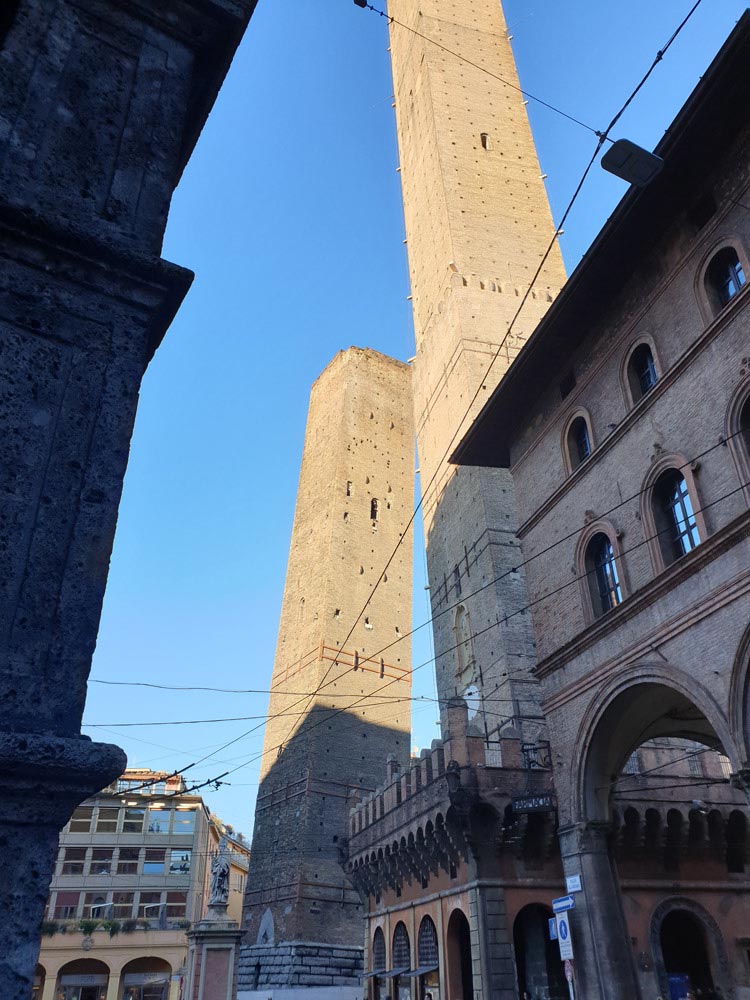
Le Due Torre or The Two Towers represent a landmark of Bologna city and they are the most important of the Towers of Bologna. Their location is central, at the intersection of the roads that lead to the five gates of the old ring wall or Mura Dei Torresotti.
Asinelli is the highest in the city with 97.2 meters, the leaning Garisenda is shorter with 48 meters. The names of the towers derived from the families that constructed them between 1109 and 1119. Their construction was a competition between the two families to show which was the most powerful family. A friend of mine told me that Garisenda family went bankrupt that is why the tower could not be completed and it remained shorter to reflect that. I can’t confirm nor deny, but it could be true, who knows. These two tours survived many fires, wars, collapses, and lightings, you name it, however they were restored to their current condition. You can climb up the stairs to have a view of the city from the top.
La Basilica di San Petronio
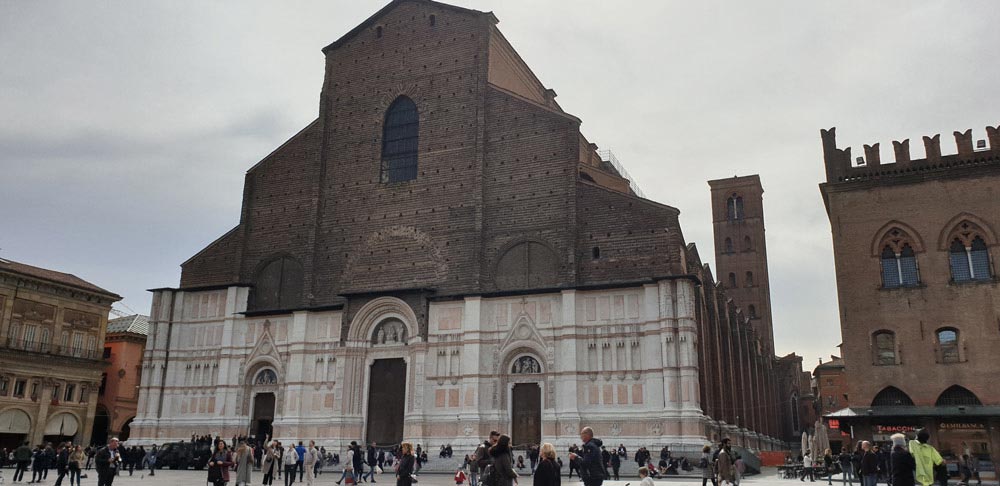
La Basilica di San Petronio is located at the Piazza Maggiore, you can’t miss it, its two colored facade is eye catching, the lower half is made with marble and the upper half is made of bricks. Weird no? Dedicated to the patron saint of the city, Saint Petronious, who was the bishop of Bologna in the fifth century. In 1390 the constructions began, yet the main facade was not completed. Why? Because they simply ran out of money. Since Bologna was one of the richest cities of Europe in the fourteenth century, its leaders wanted to build a cathedral that was larger than that of San Peter’s Basilica in Rome. Sadly the Popes did not allow this to happen, and only financed partial constructions of the church, not allowing it to become larger than San Peter’s. San Petronio Basilica is among the ten largest churches around the world, it is also the largest one made of bricks.
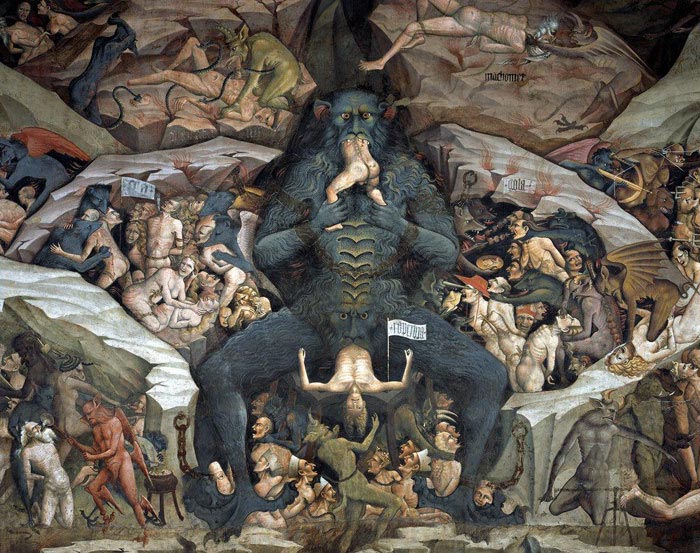
From the inside, the church has its hidden gems, you can’t but notice the mesmerizing art on the walls and small chapels. The famous fresco painted by Giovanni da Modena represents a scene from Dante Alighieri’s Inferno, and depicts on the top right side the Prophet Muhammad in Hell being devoured by demons. That is why after September 11 threats by Al Qaeda to blow up Bologna’s church forced the authorities to close the stairs of the church where many tourists and citizens used to enjoy spending their time. Scientists are also fascinated by the longest meridian line in the world, designed by the famous astronomer Giovanni Cassini. This 67 meters long time device is still accurate until today.
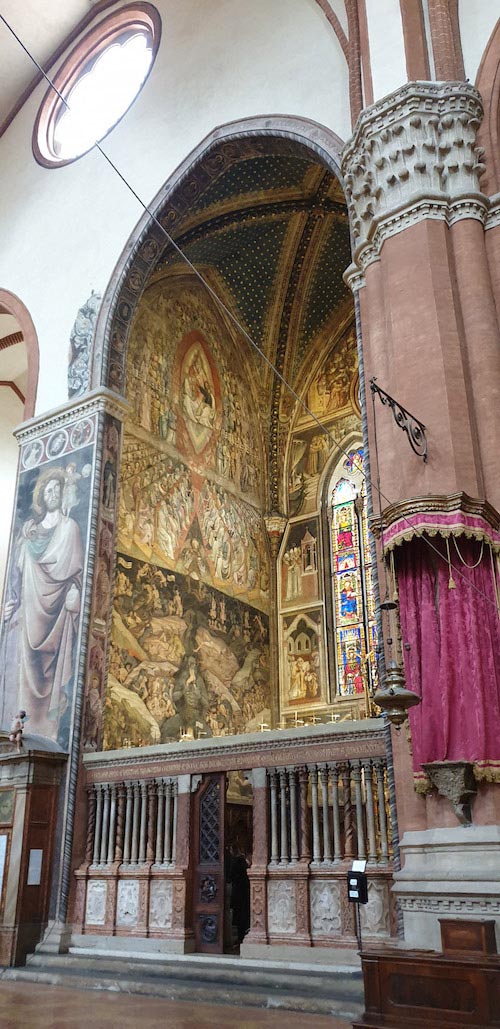

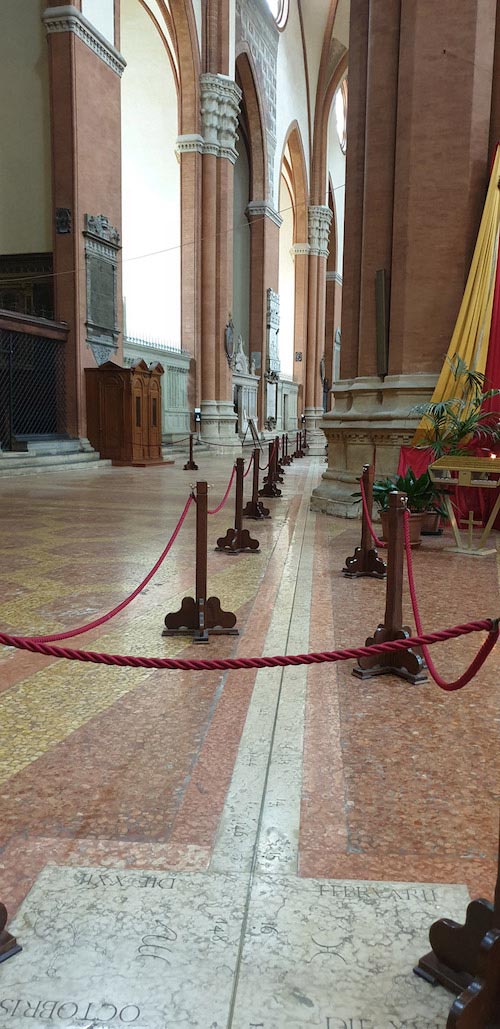
Sette Chiese Complesso di Santo Stefano or Santo Stefano Complex
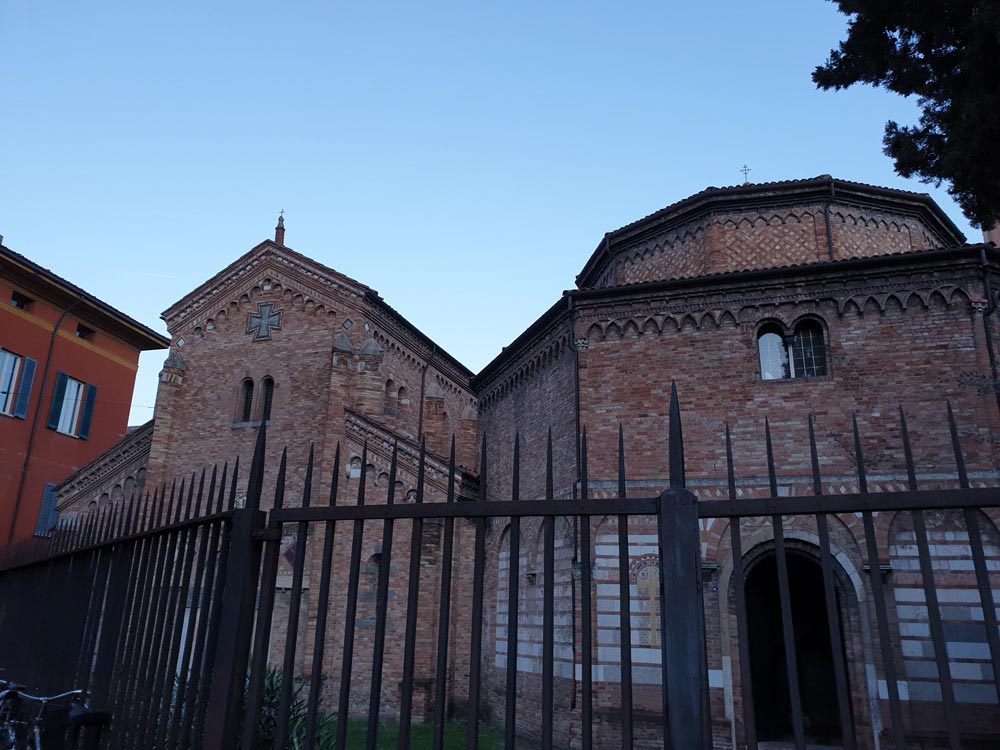
Another religious attraction at Bologna, Complesso di Santo Stefano also known as Sette Chiese, San Stefano Seven Churches at Via Santo Stefano 24, Bologna, Italy. The little Zion at the center of city, known for more than a thousand years as ‘Sancta Jerusalem Bononiensis’ – Bologna’s holy Jerusalem.

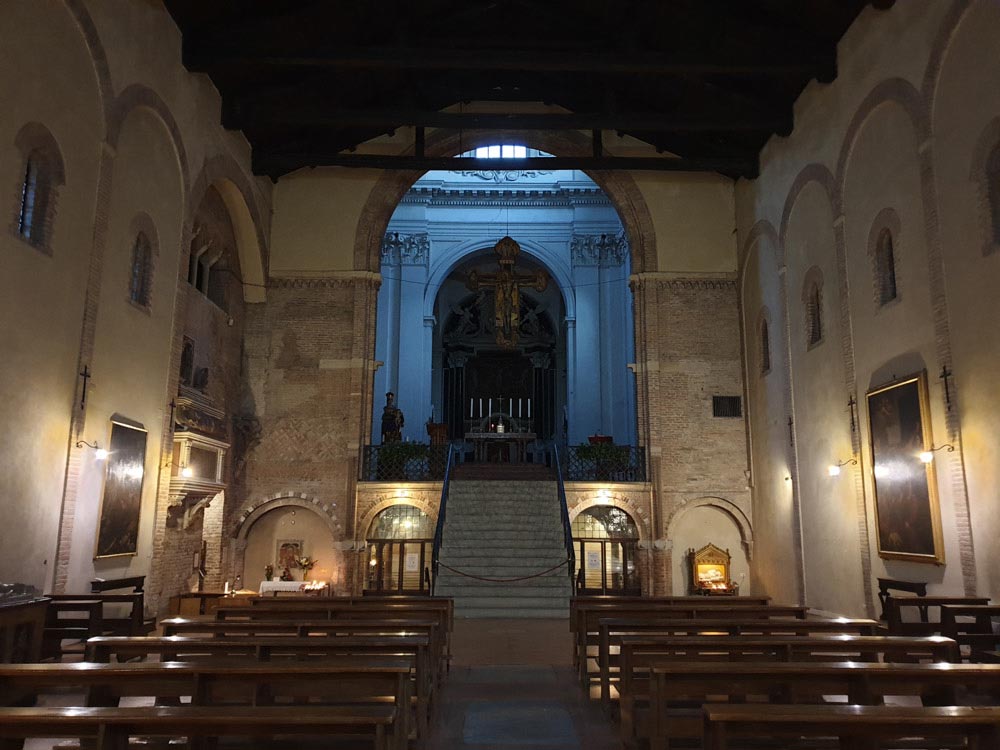
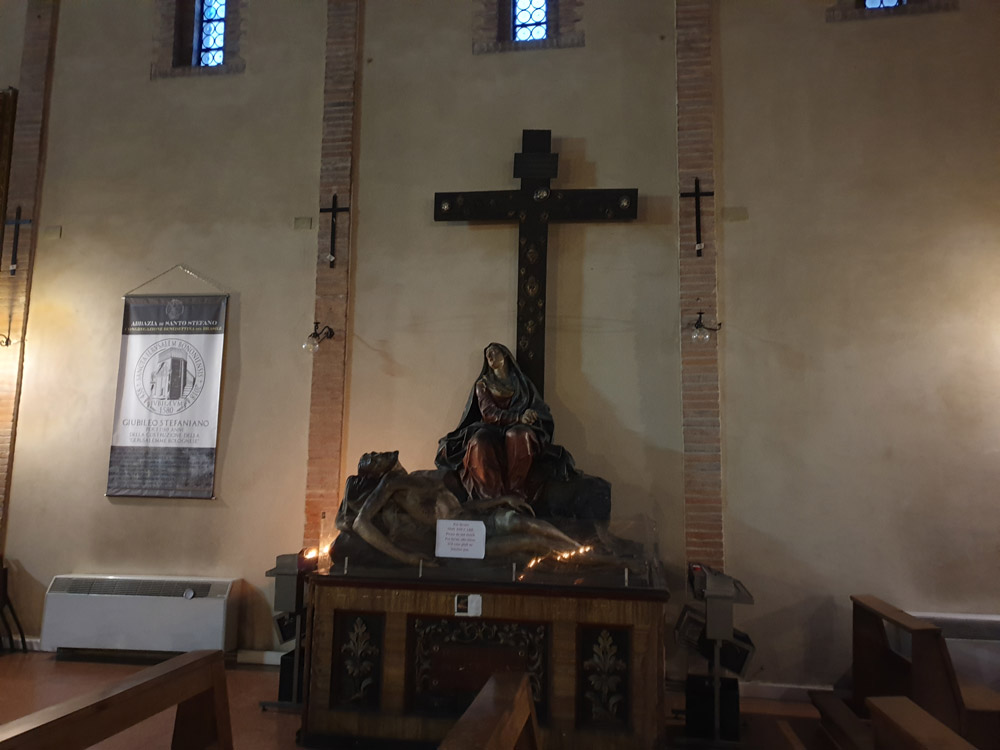
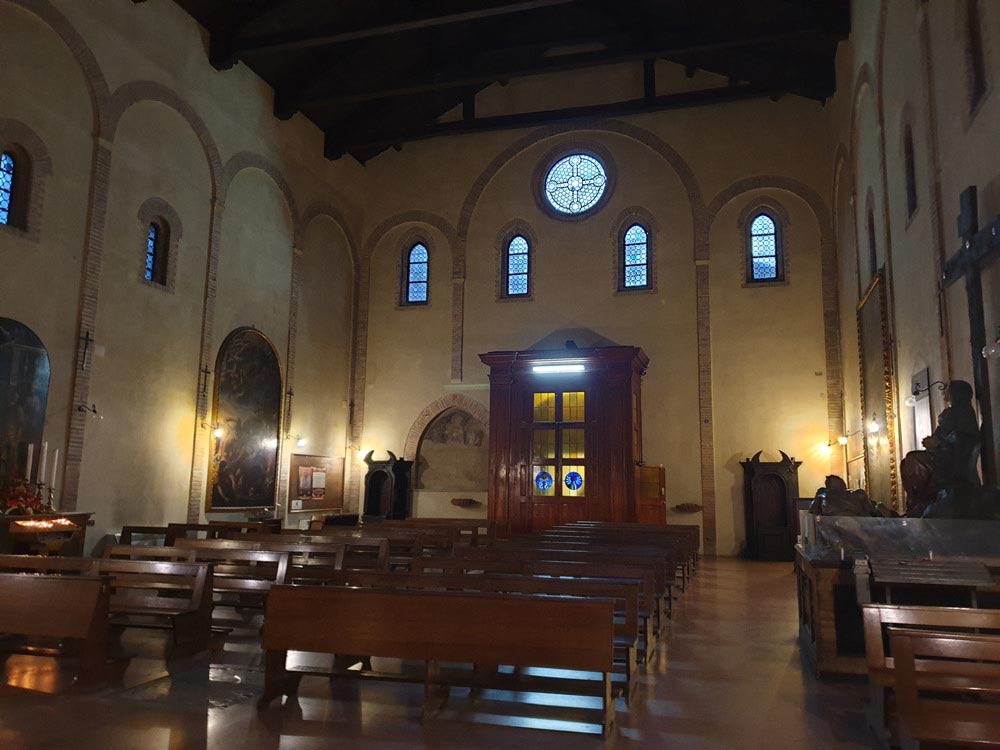
The basilica’s name originated from being a collection of seven churches, today, only four remain intact: Chiesa del Crocefisso, Chiesa della Trinità, Chiesa del Santo Sepolcro and Santi Vitale e Agricola. A collection of sacred buildings, churches, chapels and monasteries, built and restructured at different times, making it very difficult to give clear historical interpretations of its components, which can date back to the late antiquity.
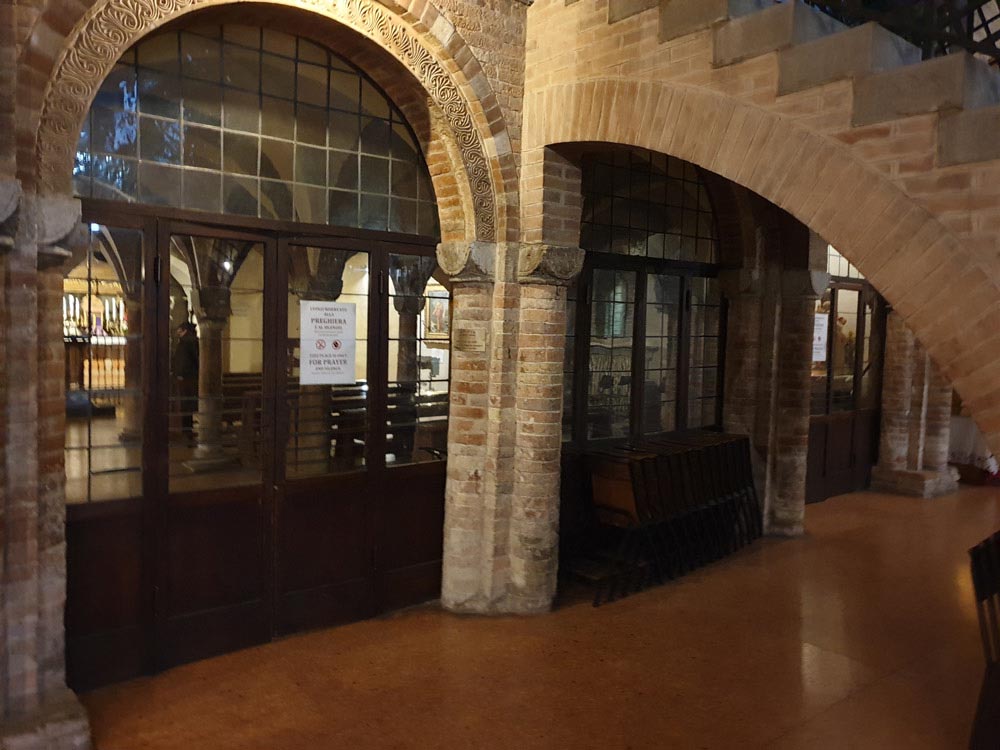
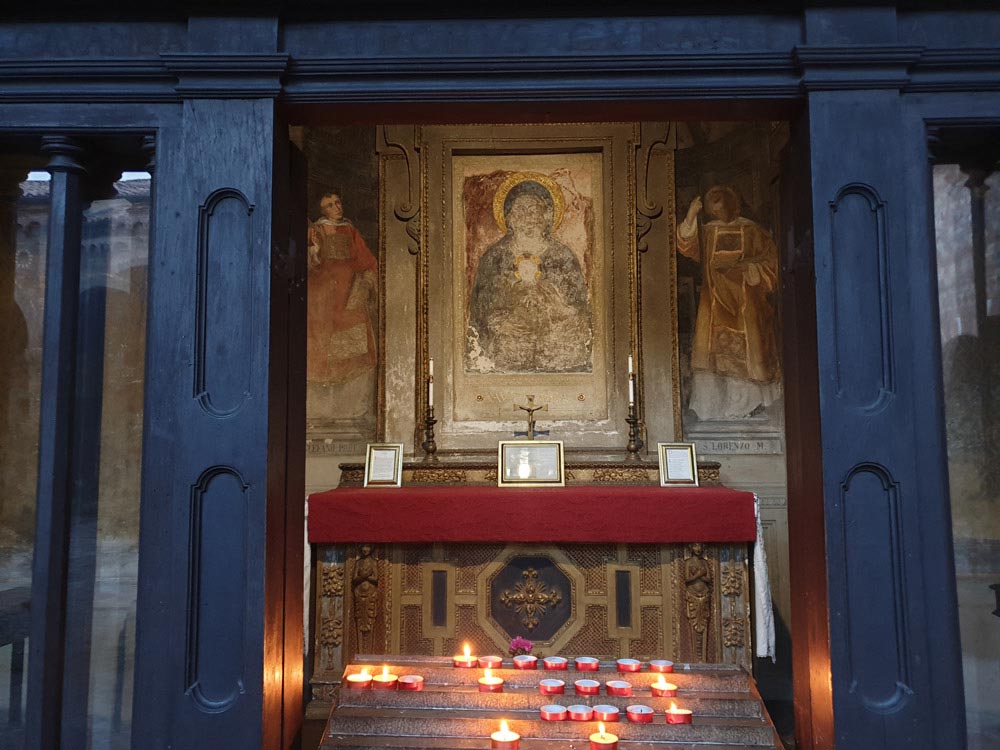

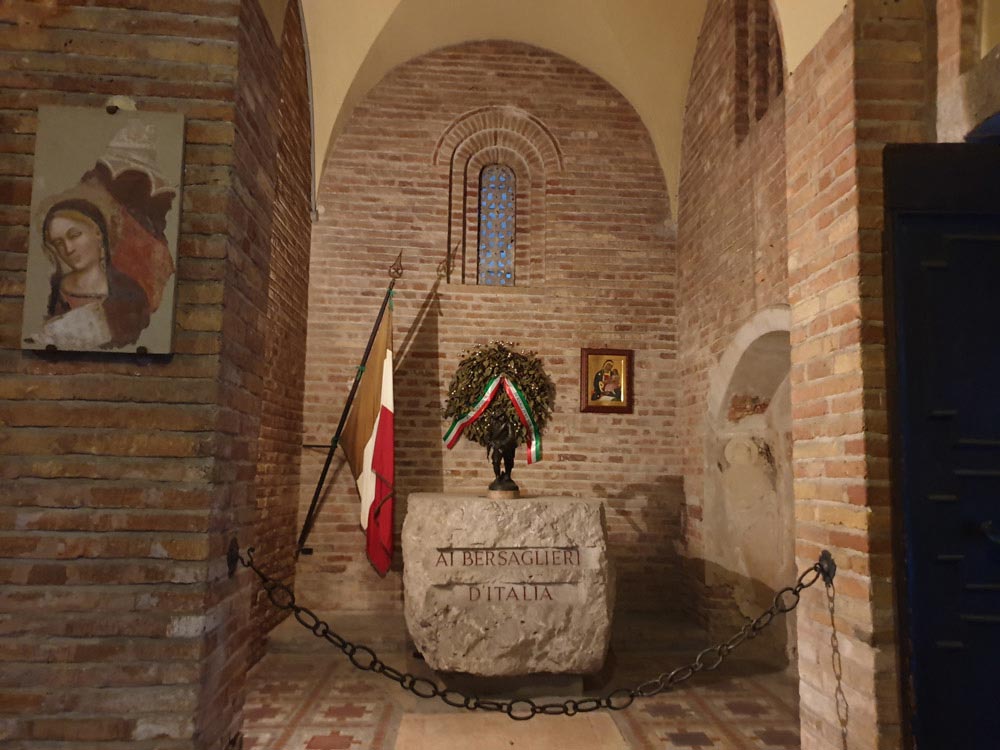
Built and restructured at different times, resulting in the difficulty of a historical interpretation of its components, there are traces of the structure dating to the late antiquity. At the beginning of the tenth century, the Hungarians invaded the city and the complex was enormously destroyed. In the early twentieth century, the Benedictines rebuilt it largely. Between 1880 and the early twentieth century, other important restorations were carried out changing thus the ancient face of the complex.
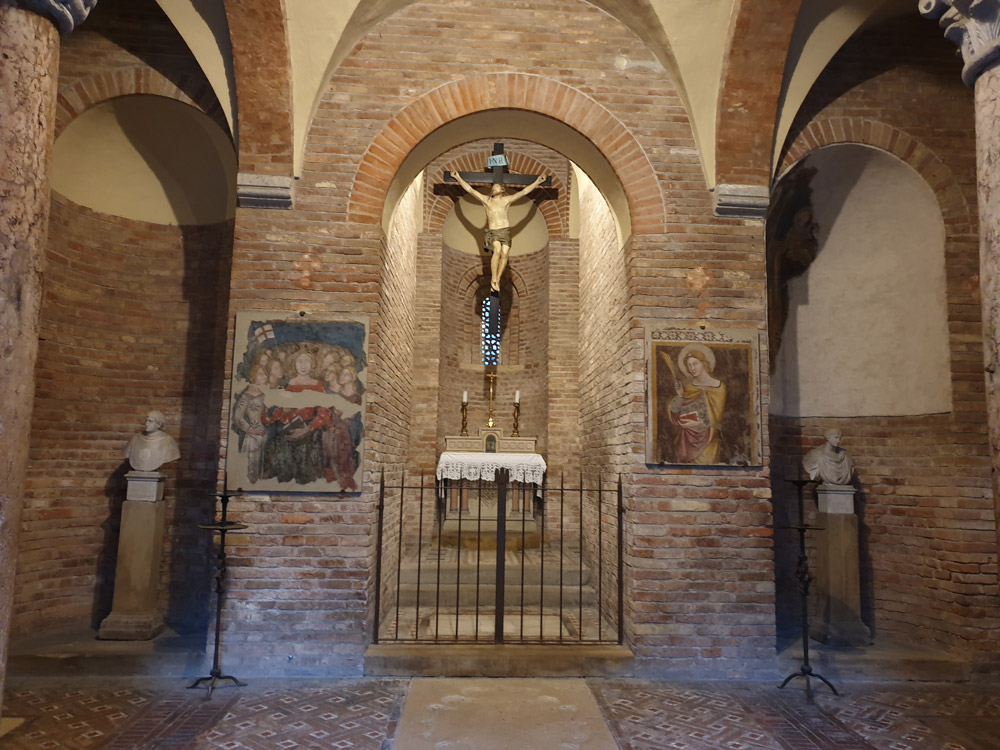
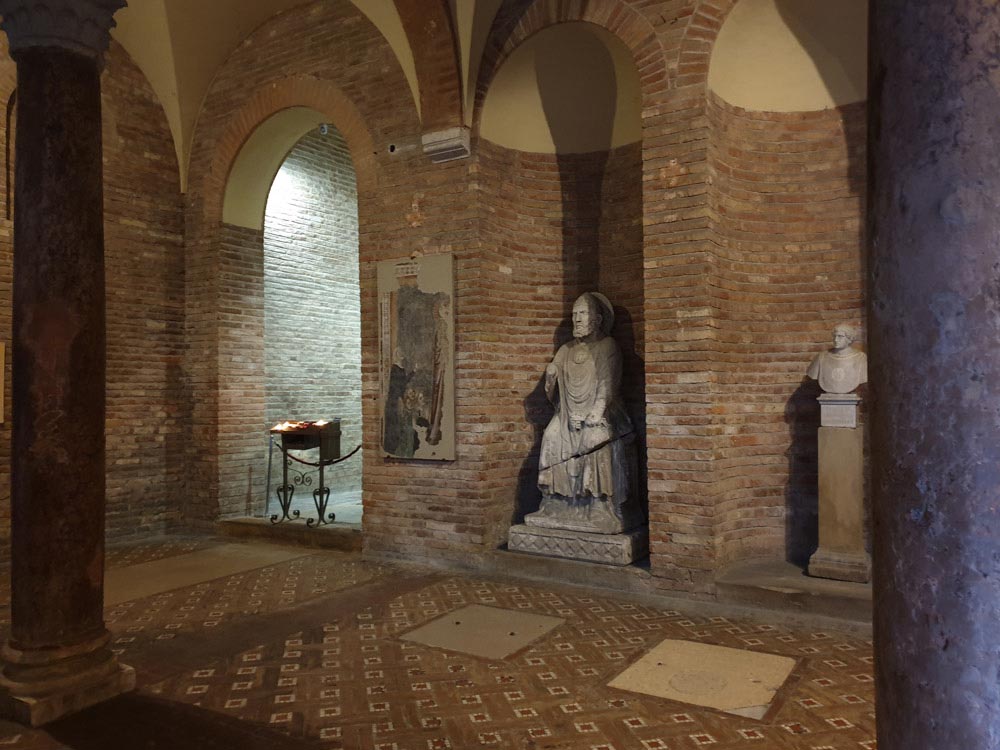
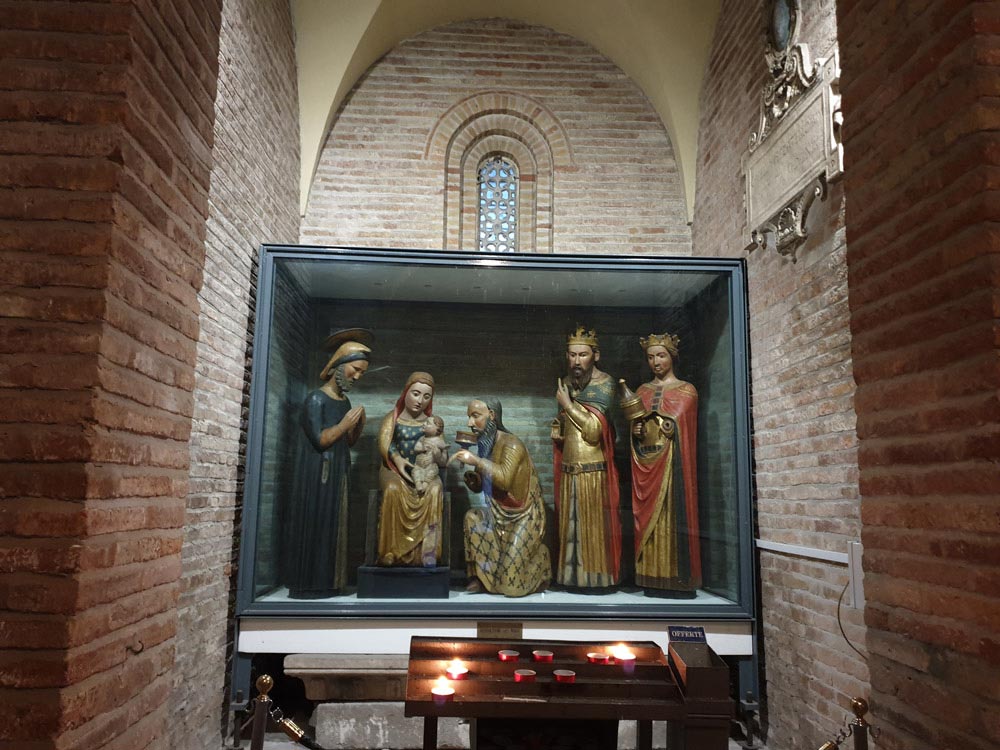
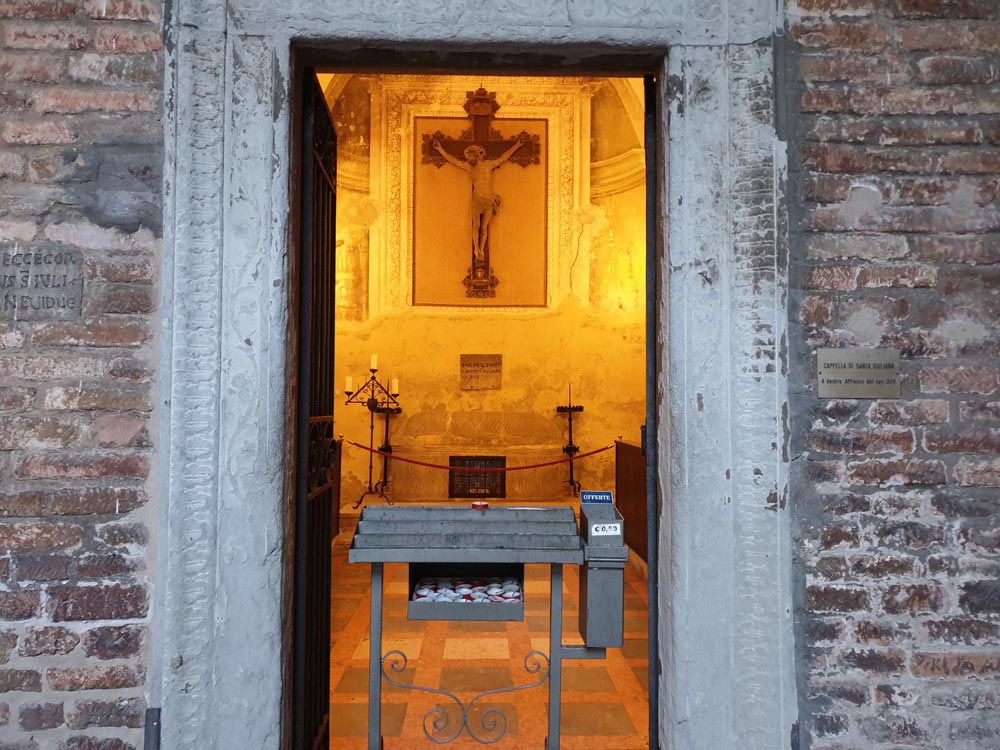
The Holy Sepulcher is a reproduction of the Holy Sepulcher of Jerusalem, which dates back to the eight century. Until the year 2000, Bishop San Petronio, patron of Bologna, was buried. Now his relics rest in the Basilica of the same name, in Piazza Maggiore. The Holy Sepulcher is only open during the eighth of Easter, when the faithful enter to contemplate the “empty tomb” as the Gospel says (Mk 16,6). Inside there is a relic of the rock of the original Holy Sepulcher of Jerusalem.
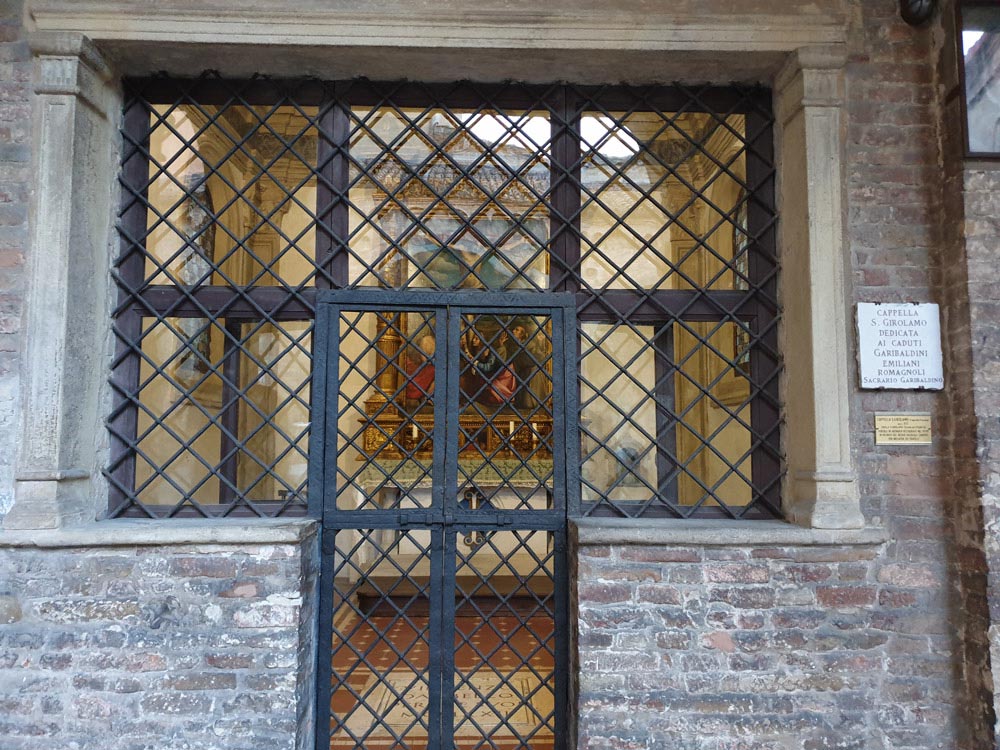
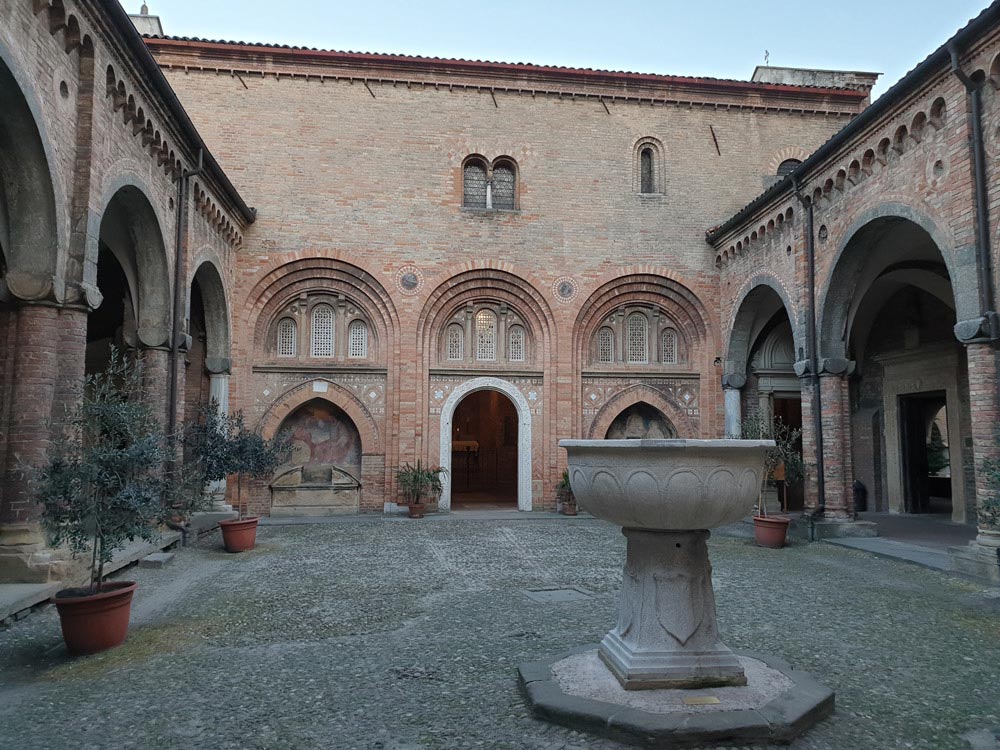
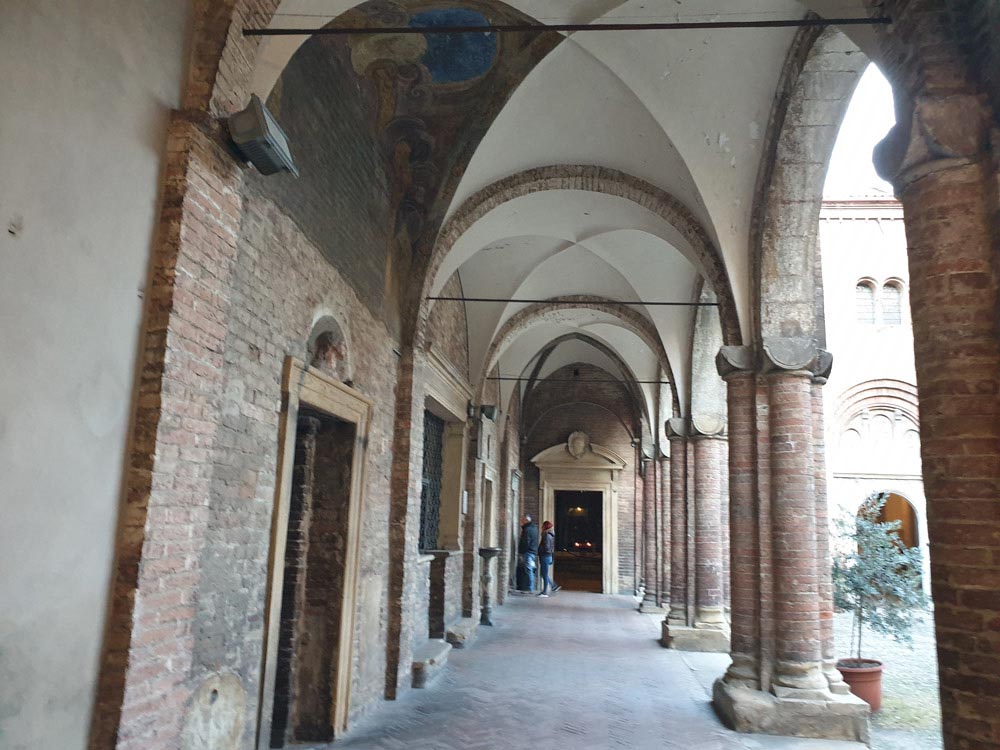
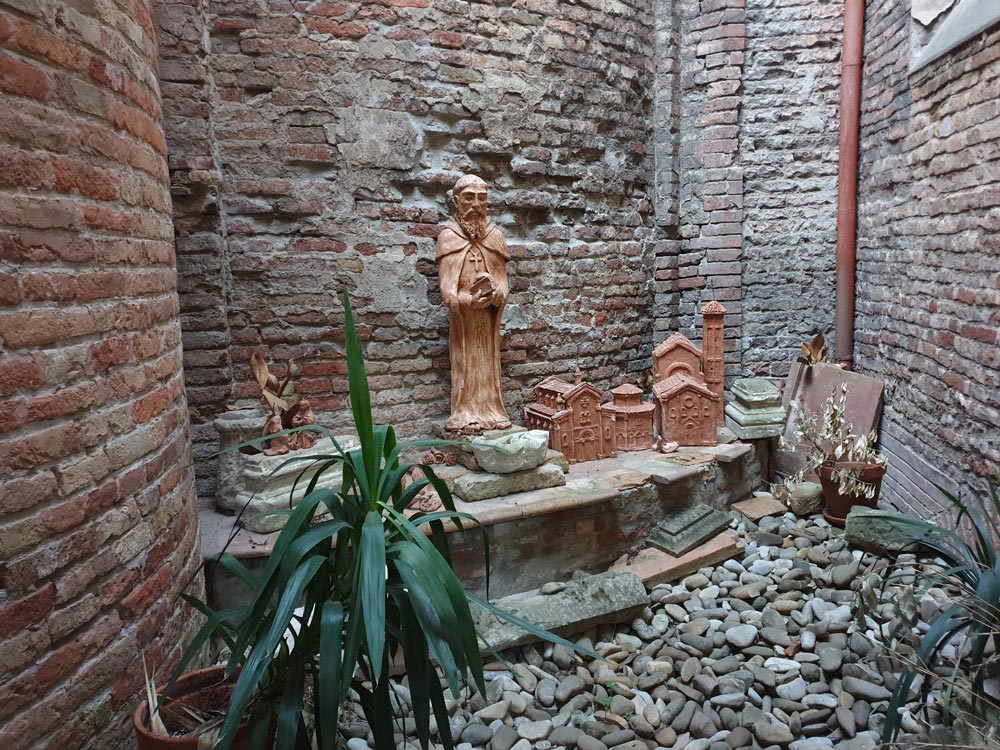
Chiesa del Crocefisso dates back to the 11th century and is the main entrance of the Sette Chiese, it houses the bones of San Petronio and leads through to the Chiesa del Santo Sepolcro. This church has an octagonal structure and was probably used as a baptistery as mentioned by lonelyplanet. The Cortile di Pilato is right next to it, named after the 8th century Lombard artefact central basin. It is said that Pontius Pilate has washed his hands in that basin after condemning Christ to death. The Chiesa della Trinità is located right beyond the courtyard, it connects to a modest cloister and a small museum. The city oldest church Santi Vitale e Agricola is the fourth, it has beautiful recycled Roman masonry and carvings. You will also noticed tombs of two saints in the side aisles dating back to before the 11th century, these tombs once served as altars.


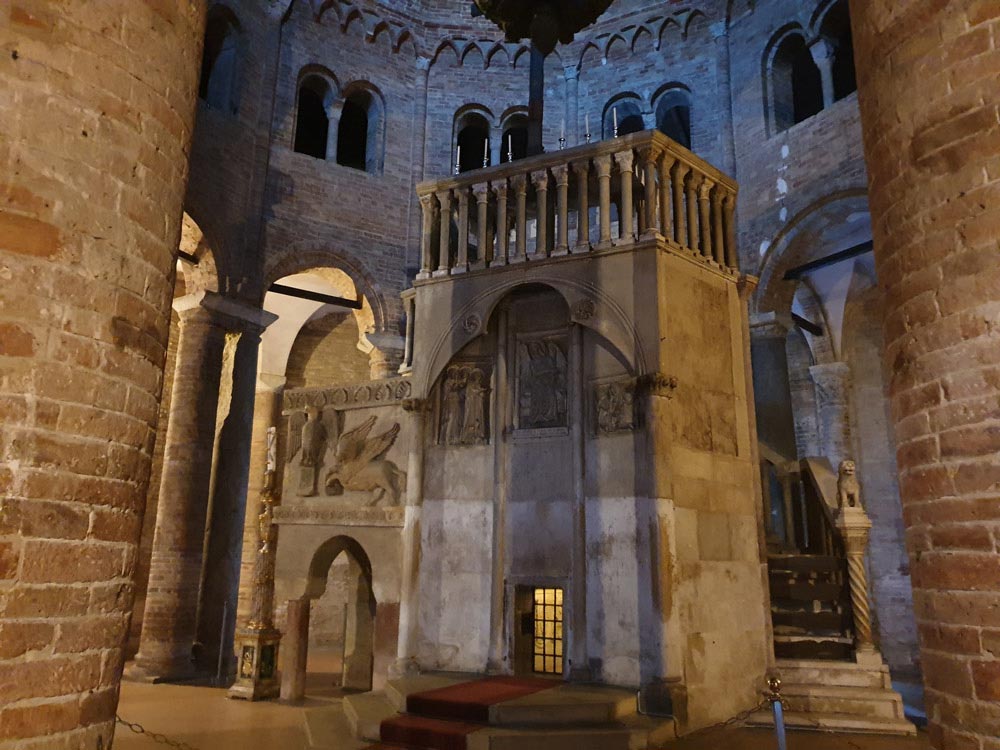

Stories People Say about the Basilica of Santo Stefano taken from visitupbologna
Inside the church of the Holy Sepulcher, part of the complex of the seven churches, remote traditions tell that it was possible to crawl inside the Sepulcher in the past to worship the remains of the saint. It is also said that the prostitutes of Bologna on Easter morning, in memory of Mary Magdalene, went to say a prayer before the Holy Sepulcher whose contents were never revealed.
Another ancient tradition tells that pregnant women in the city walked around the tomb thirty-three times, corresponding to the years of the Savior’s life, and entered the sepulchre at every round to pray. At the end of this, the women would go to the nearby church of the Martyrium to pray, this time before the painting of the Pregnant Madonna.
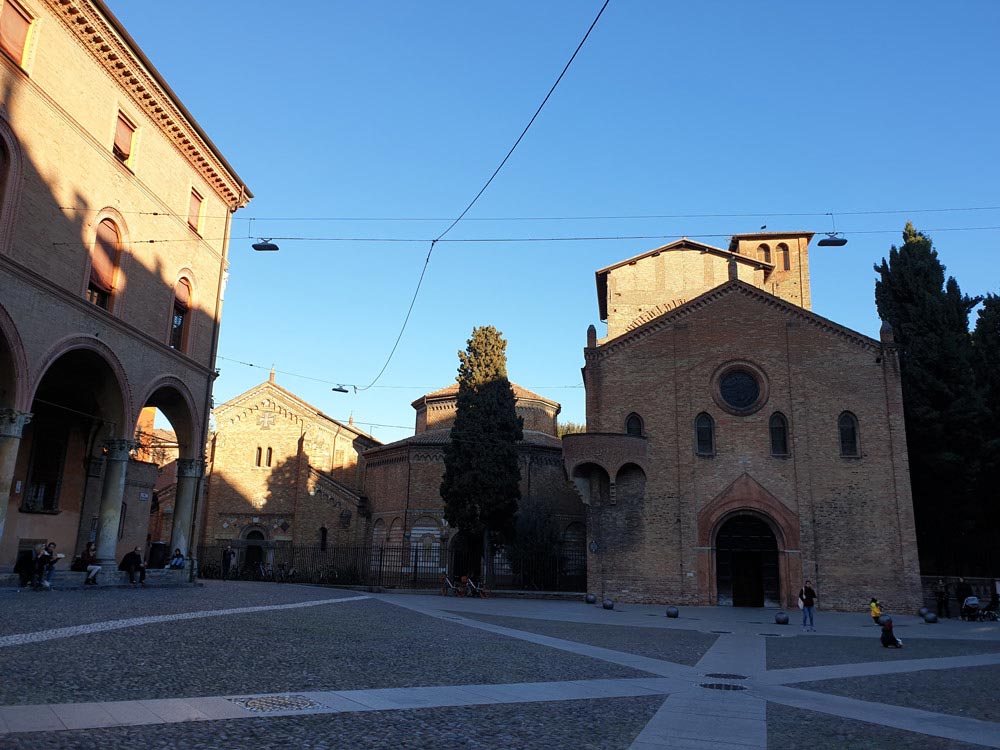
Located at the beautiful busy Piazza Santo Stefano also known as Piazza delle Sette Chiese. This triangular space is a pedestrian only zone, and is used for various events, cultural events, flea markets, concerts among others.
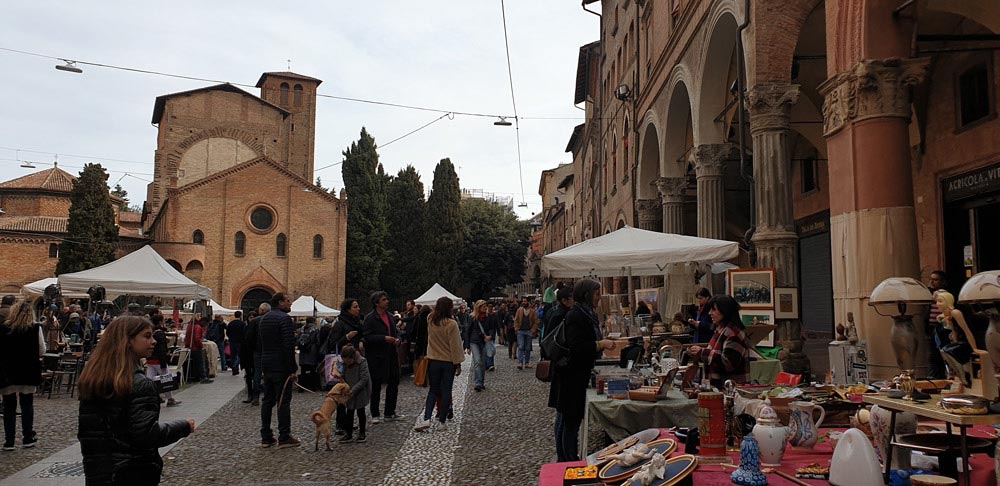
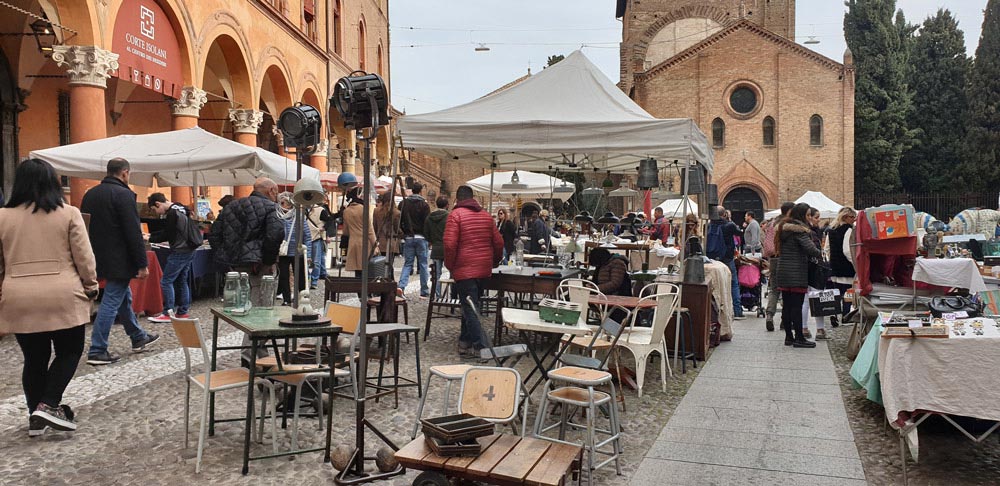
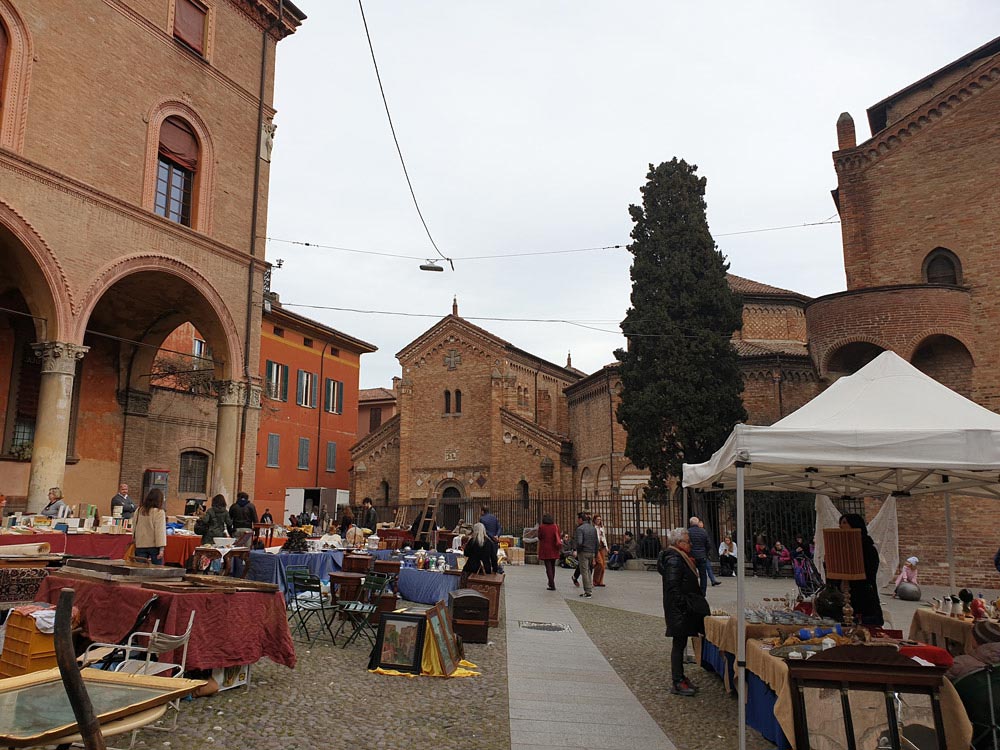
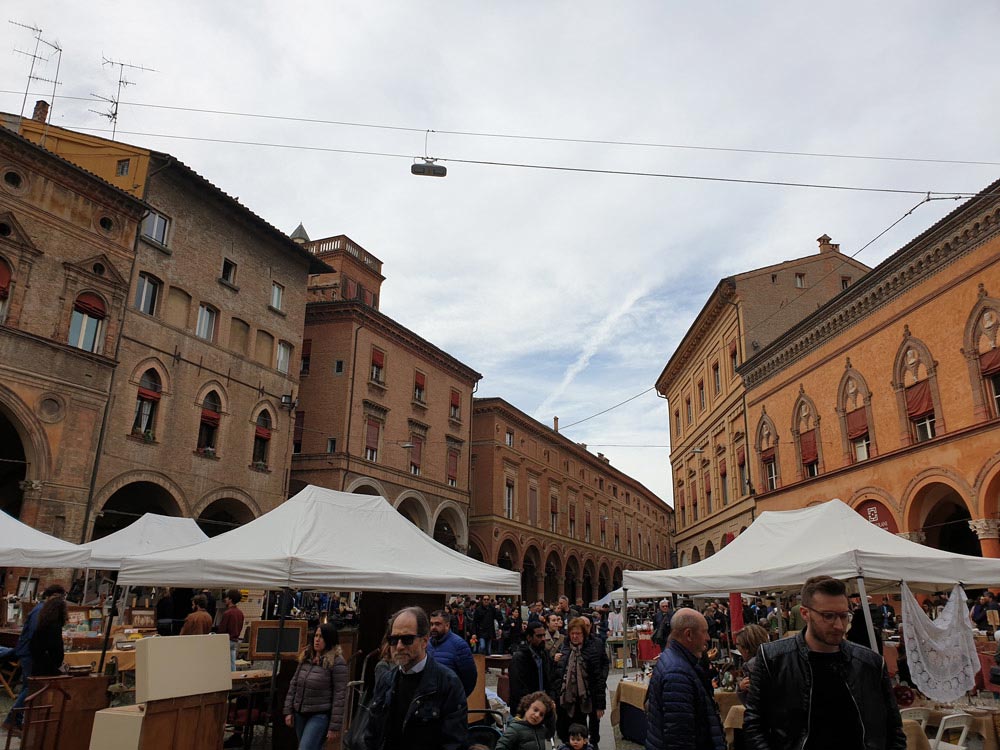
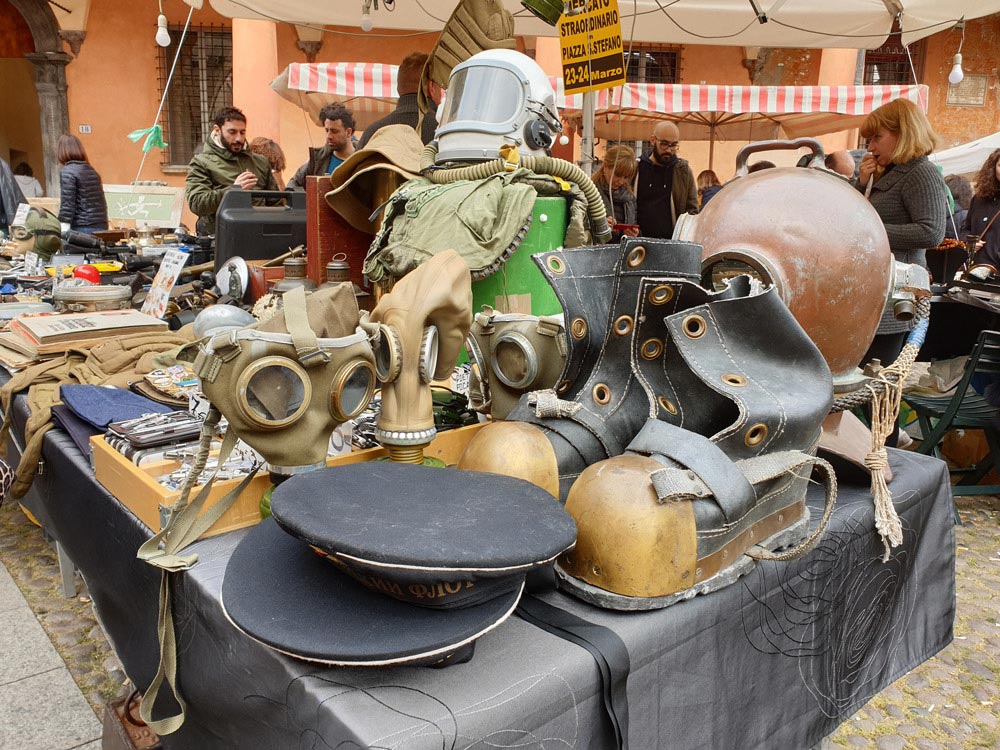
Archiginnasio
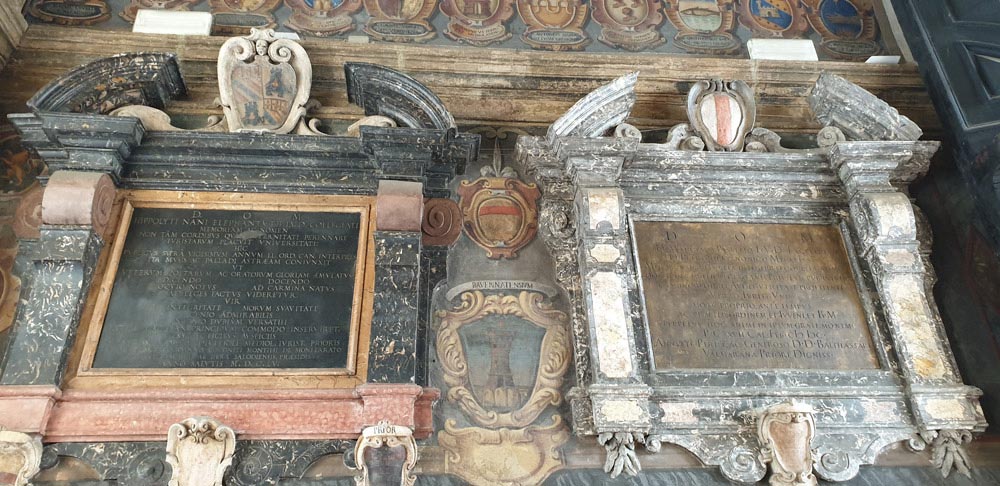
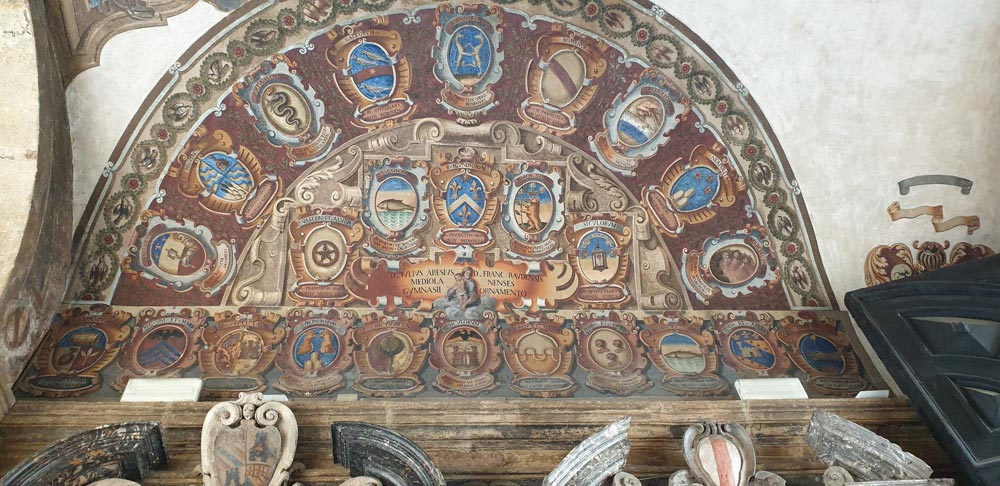
The Archiginnasio built during the same period where the Neptune Fountain was built and when Piazza Maggiore was remodeled under papal orders. Located in the heart of the historic city centre, it has been the home of the Municipal Library since 1838.
The Palace was commissioned by Cardinal Borromeo and was built between 1562 and 1563 to a project by architect Antonio Morandi known as Terribilia as the seat of the University (until 1803). It was heavily damaged by bombing in 1944 and was later rebuilt.
Two large staircases lead to the upper floor featuring classrooms, two lecture halls and the anatomical theater built in 1636 by Antonio Levanti. It was the hall used for anatomy lectures and displays.
The inner central courtyard has thirty arches or porticoes and surrounds the former church of Santa Maria dei Bulgari. It is also decorated by the coat of arms of the student families.
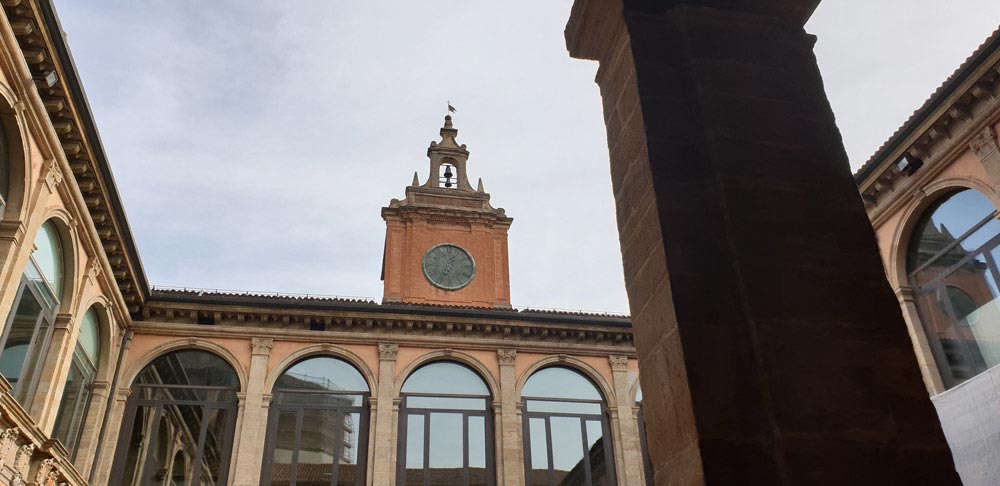

Canale di Reno
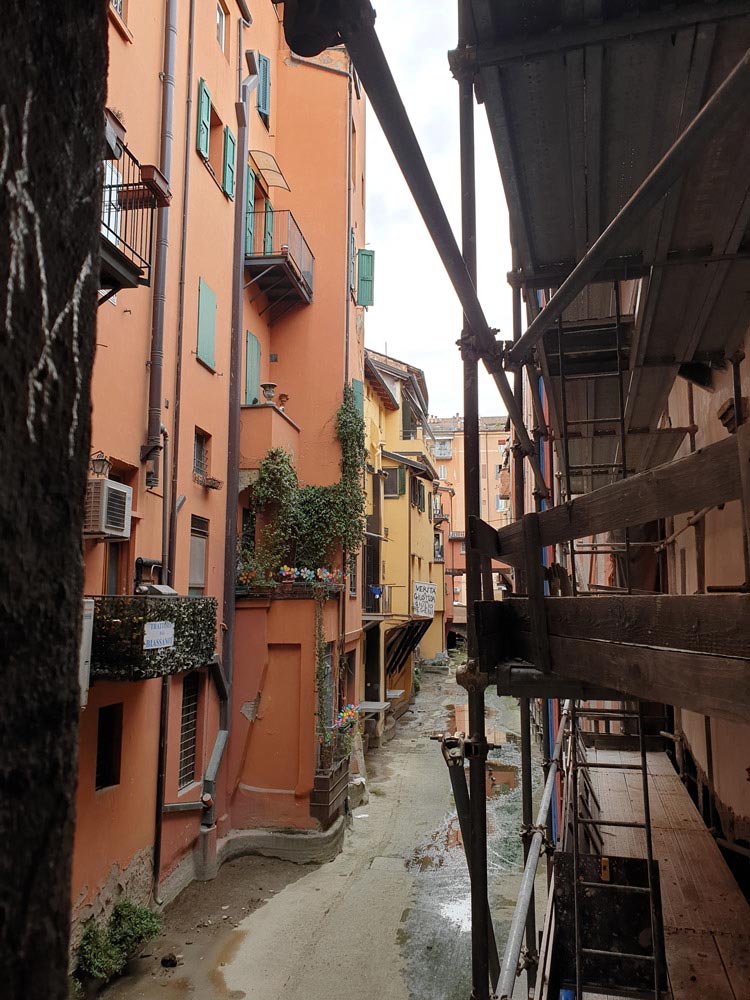

Bologna has a 60 km network of largely covered over canals. These canals were dug to connect the city with the rivers Reno and Savena. The canals were used to drive water mills, making the city a main commercial trade center in the Middle Ages thanks to hydraulic system of canals and locks that produced energy for the trades. The canals inside the walls of the old city are concealed by the buildings or the water is mainly distributed through underground pipes.
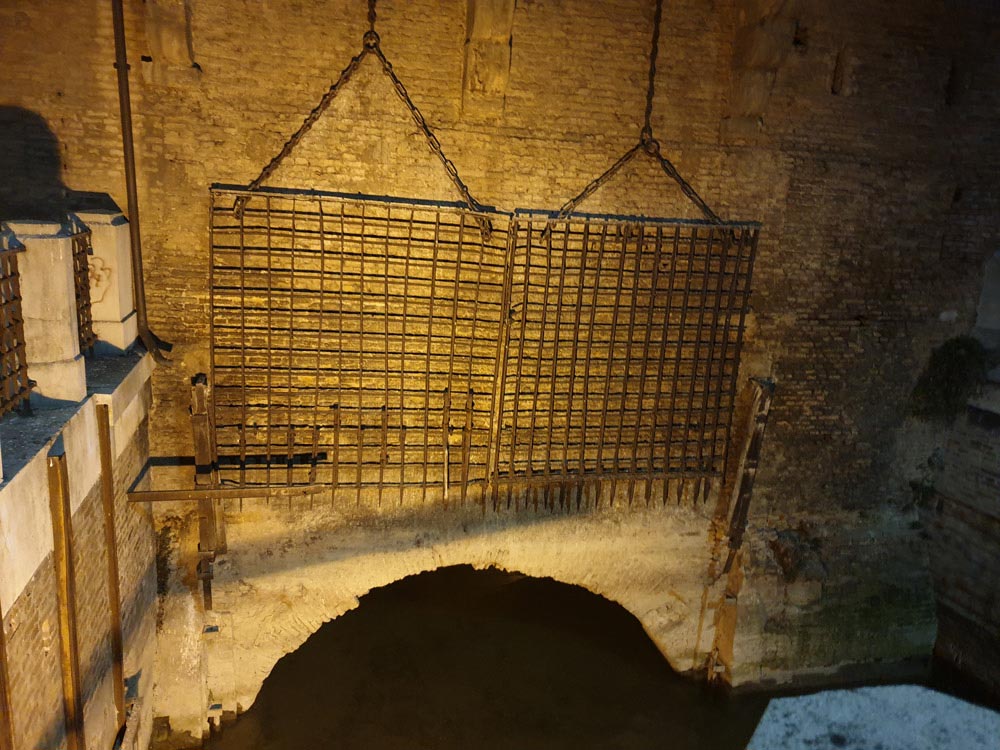
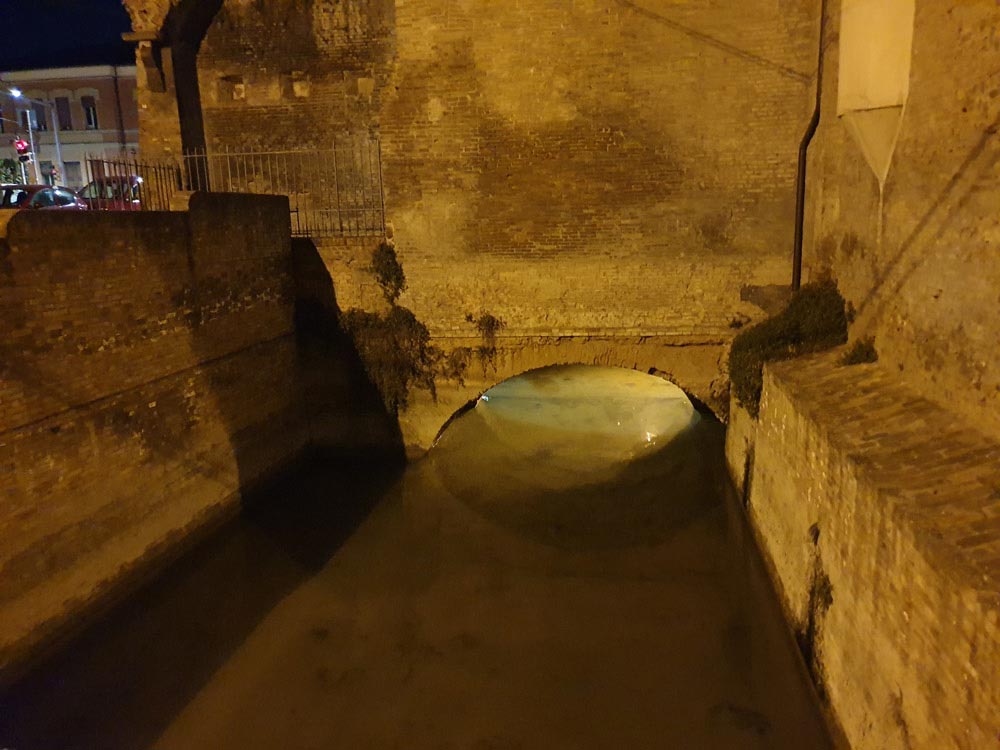
The Church of Santa Maria e San Valentino della Grada is famous above all because it preserves the remains of the priest and martyr San Valentino. Located near Porta San Felice on via Monaldo Calari. Its name derives from the grada (a metal grille), as seen in the image, through which the Reno Canal entered the walls of the city and that was mainly used to prevent possible enemies to enter the city. The church was built by enlarging an oratory which had been built by the Confraternita di Sant’Antonio da Padova at the beginning of the 17th century in order to worship the image of the Virgin Mary, already kept in this area since 1576. Inside the church several paintings by A. Catalani, P. Fancelli, G. Caponeri may be seen.
Bologna Streets

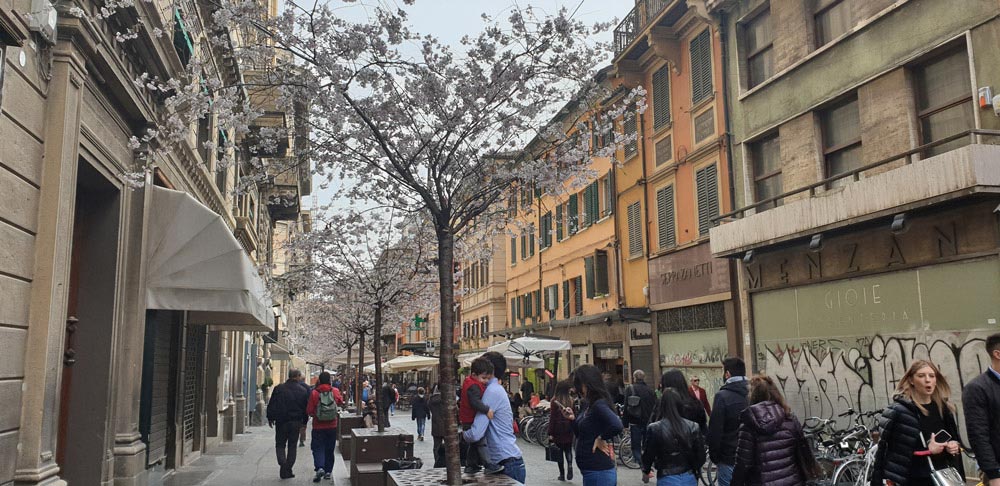
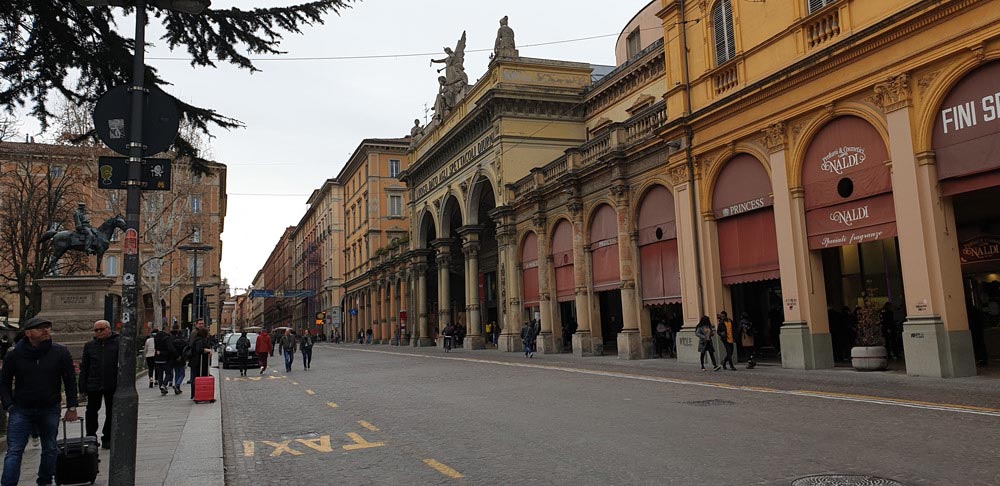
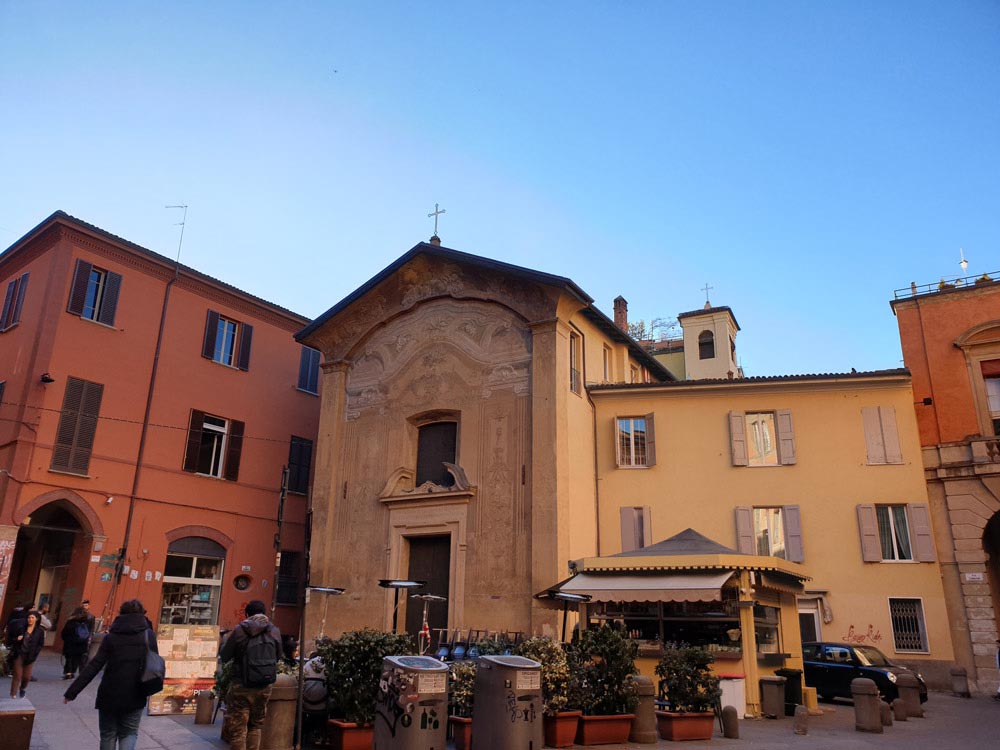
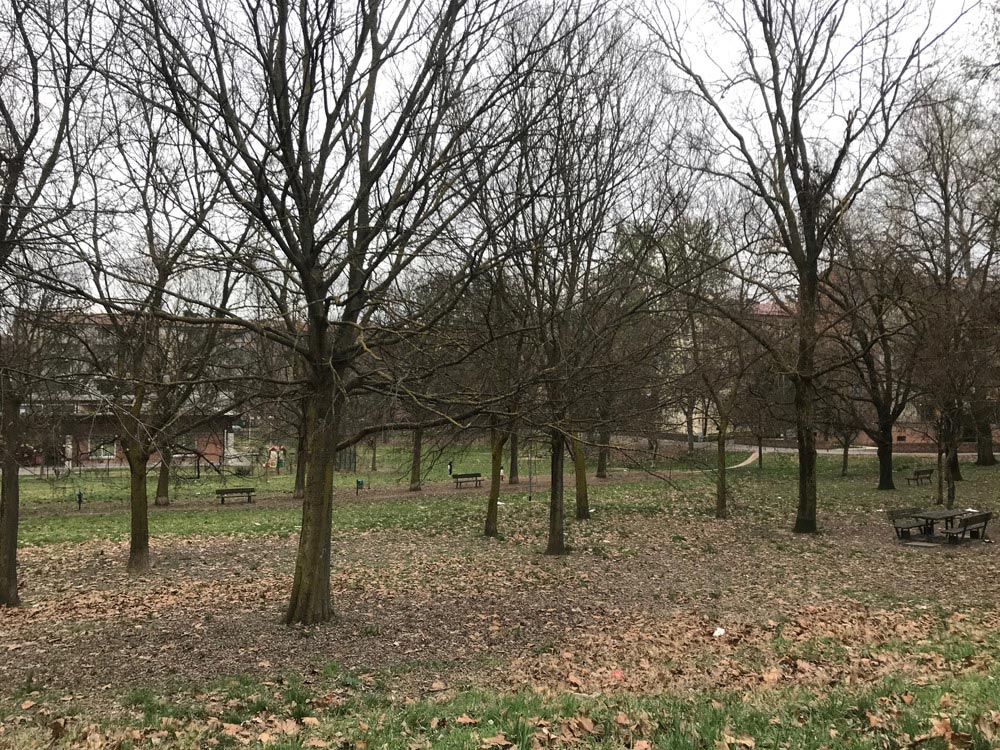
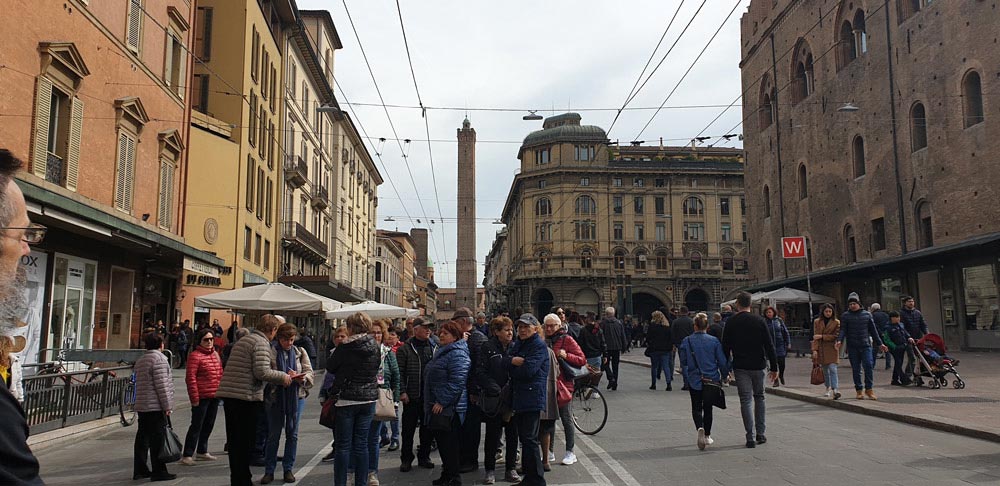
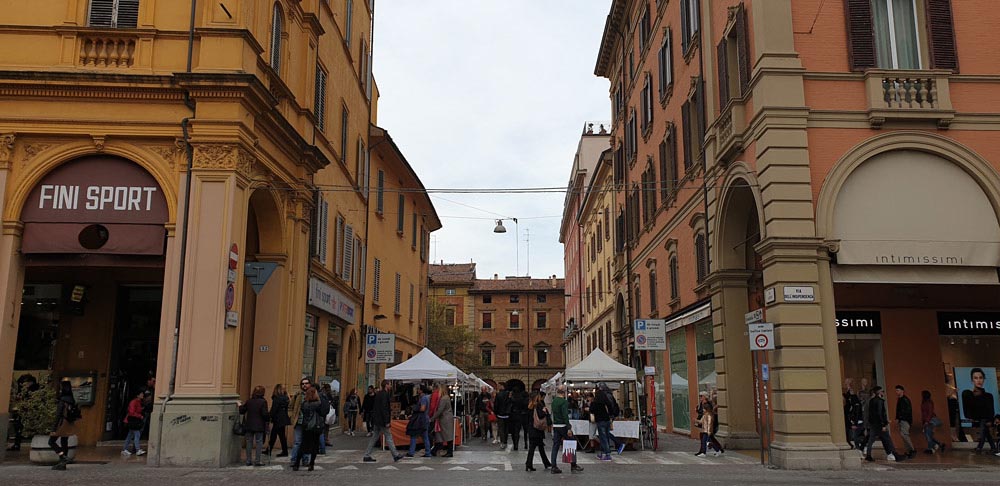
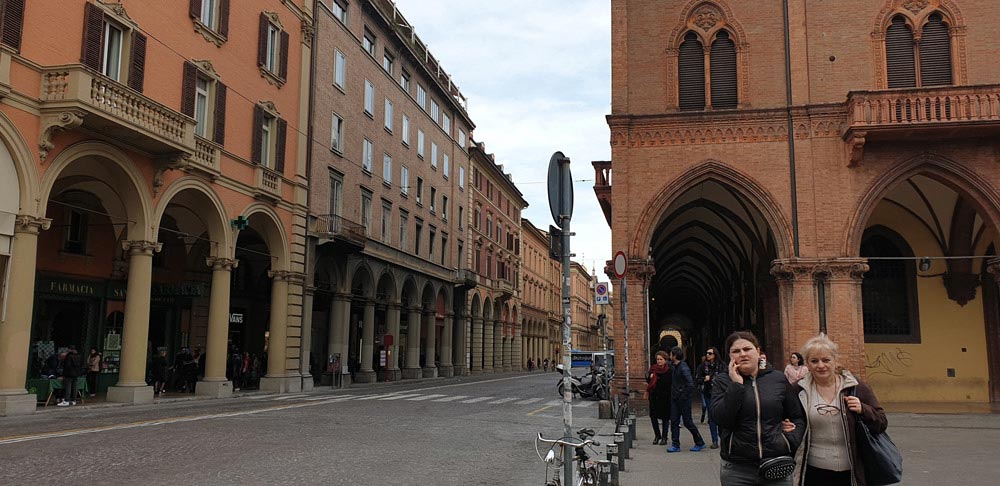
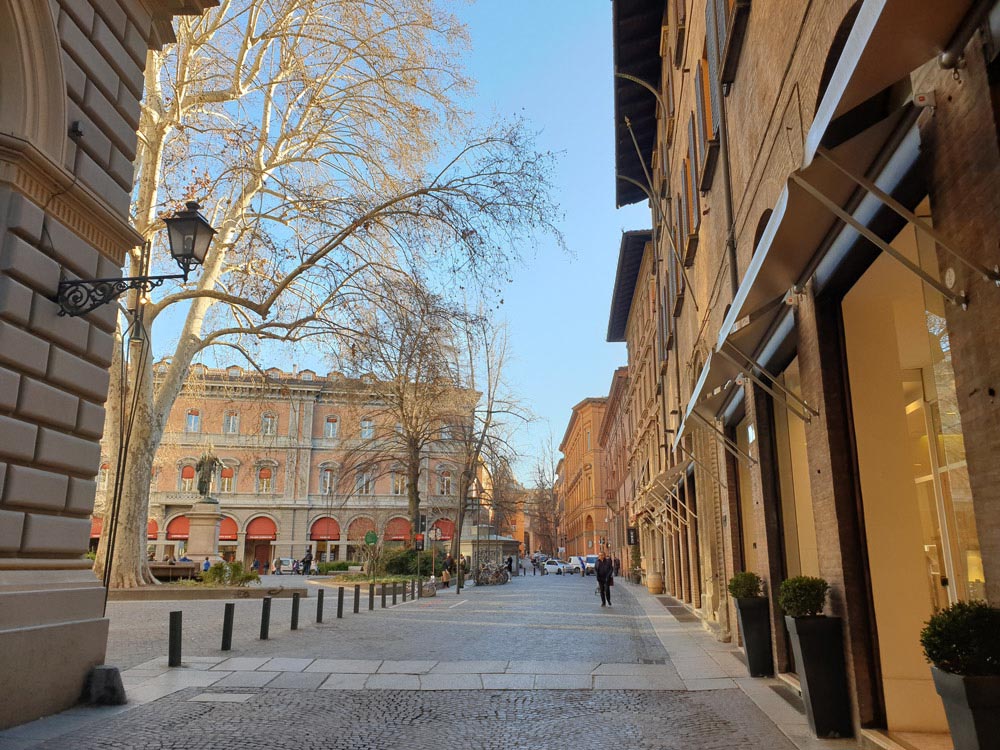
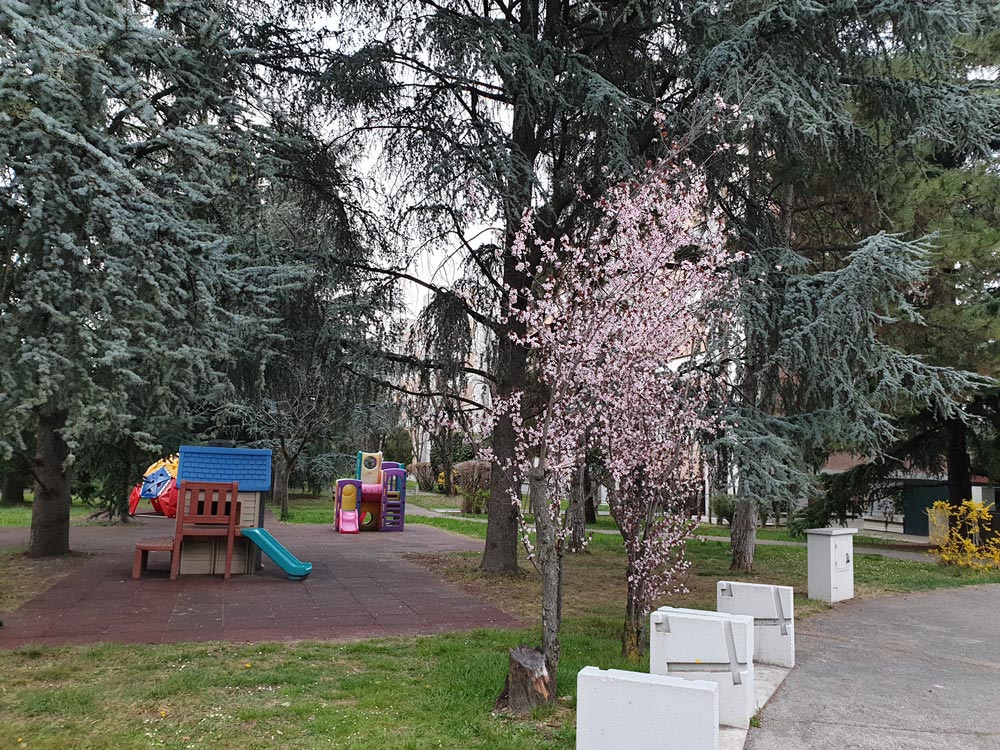
Bologna city is characterized by its porticoes, an open air salon over 40 km long to host the increasing number of students who came from all over Europe and where offered rooms on the upper floors. Walking around, you will notice different types of porticoes built during a long historic period around 1,000 years old; some are wooden, others are semi-porticoes without columns, and others with brick or stone pillars.
The city is easy to tour, you can walk around, take public transportation, a bike or a motorbike. Public transportation is easy to access but during exhibition periods, it can be busy and late.
If you want to stay in Bologna, you can either book a hotel room or stay at an airbnb apartment. Remember that hotels or airbnb apartments can be located in a pedestrian area where cars or public transportation cannot reach, so you have to walk with your baggages. If you are wondering where to book when in Bologna, you have two choices. You can book in the center or close to the center, you will have easier access to more attractions, bars and restaurants, but it will be noisy. If you prefer a calmer environment, you can move further away from the center and use taxi or public transportation to reach the attractions.
Here is a video to recap all photos of the blog and some additional ones.

